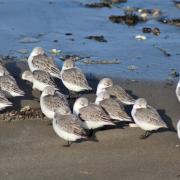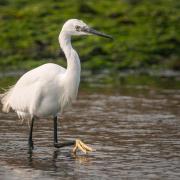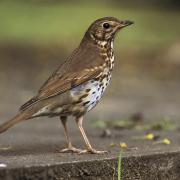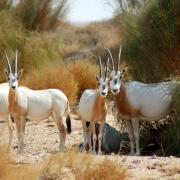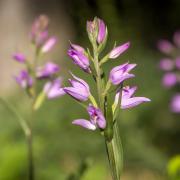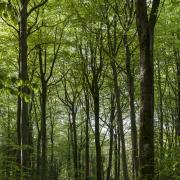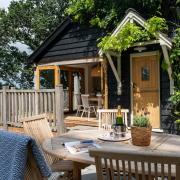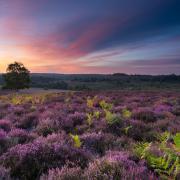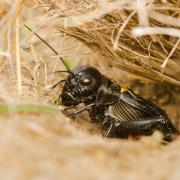With hedgerows being to Hampshire what stone walls are to the Pennines, it is vital we preserve them for the future says Howard Beck

Colourful meadows and lush pastures, divided by traditional hedgerows into patchwork quilt-like arrangements, are one of the quintessential sights of England’s green and pleasant land. They mark the perimeter of fields and agricultural plots, giving to the English landscape a unique visual sense of its character. While some hedgerows constitute early parish limits, others can reflect the boundary of a pre-1600 estate or manor. From this it is clear how they very often are tied up with landscape history, helping to give people a sense of place.
In our very own Hampshire, hedgerows are to the landscapes of the south what dry-stone walls are to the Pennines and northern counties; however their importance runs deeper than the obvious.
Though the hedgerows of many counties have been in decline since the war, here matters are on the up with The Council for the Protection of Rural England (CPRE) and the Hampshire Wildlife Trust working together for the future of the county’s 15,040 kilometres (4.6% of the national total) of hedgerows.
Hampshire’s hedgerows have a national significance. Not only have they been identified as the primary habitat for nine of the 493 priority species indigenous to the county, but additionally as a secondary habitat for a further 28 species. From a wildlife diversity standpoint alone their value is inestimable, and it goes without saying that it is incumbent on all who work in, visit or enjoy the countryside to preserve and protect hedgerows and the creatures they support, as part of the amenity of our broad acres.
The distribution of hedgerows in Hampshire was fully audited in the late 1990s using aerial photographs taken in 1996 and 1997. The most recent comprehensive national review of the Hedgerows Regulations was published by the CPRE in April 1999. Areas identified with having high density, high quality hedges include a strip of land running from west of Romsey to Waterlooville, an area on the northern fringes of the county, and more discrete areas bordering the New Forest.
An ancient hedgerow is best defined as one that supports the richest diversity of wildlife species, both plant and animal. To qualify for protection under the Hedgerow Regulations, a hedge must be at least 30 years old and extend for a minimum of 20 metres. It has to run on agricultural land, common, or a village green (garden hedges do not qualify), or border a nature reserve or SSSI.
To be designated a species-rich hedgerow it must contain at least five woody species in an average 30 metre stretch. Furthermore, those having a diverse range of herbaceous (non-woody) plant species also qualify as a hedge worthy of conservation. So it can be understood then, how the importance attached to a hedge can be far more wide-ranging than simply the delineating of a boundary.
Hampshire hedgerows usually are comprised of a number of species, particularly the ubiquitous hawthorn, elder and blackthorn, but additionally including hazel, the wild or dog rose, wild cherry, dogwood, field maple, crab apple, holly and guelder rose. Stretches of hedge are quite often underpinned by larger trees for instance oak, ash and sycamore maple.
For the observant rambler there is much to see and enjoy along a walk that takes in or runs alongside a hedgerow. The shady hollows of a hedge bottom offer secure nesting for small birds such as the wren and robin, and are a haven for the more retiring creatures: mollusks, small mammals like voles and weasels and the host of insects whose survival depends on such secretive nooks.
In the almost impenetrable tangle of hawthorn branches may be found the nests of finches, often magpies too, while higher still songbirds such as thrush, yellow hammer, blackbird and linnet may be heard vocalizing from the topmost twigs with the first hint of dawn. Rooks, always spurred into action by approaching spring, squabble noisily in the higher-most reaches of ash and beech, stealing materials from their neighbours to build new nests.
Some hedges are included in Sites of Special Scientific Interest (SSSIs) and Sites of Importance for Nature Conservation (SINCs), both as boundary features or as features in their own right. Where they are included within SSSIs the cutting of hedgerows is listed as a potentially damaging operation which requires landowners to liaise with English Nature on management practice.
In recent years hedgerows everywhere have emerged as one of the most crucial wildlife retreats. The combined semi-shade of hedgerows and field margins are a rich source of flowering shrubs and herbaceous wild plants. Immediately at the hedge’s foot one can find bluebell, wood anemone, wood sorrel, cuckoo pint and less commonly, yellow archangel. Further out in the field margin the pink of campion contrasts with cow parsley and garlic mustard.
With the progression of summer other species appear in sequence: stinging nettle, white dead-nettle, water avens, stitchwort and hedge woundwort. Black bryony, honeysuckle and woody nightshade are representative of the clambering and twining hedge plant community, while field margins can sometimes include species more usually associated with traditional meadows, the likes of yellow rattle, betony, bugle and meadow cranesbill; even the occasional orchid such as pyramidal, fragrant or early purple.
When associated with a drainage ditch a hedgerow becomes even more valuable as a wildlife habitat. King cups, water forget-me-not and monkey flower may be found in these wet areas, which additionally attract frogs, mayflies and other water-dependent invertebrates. If the hedge also includes mature trees then it’s all the better: a single venerable oak, for instance, may support as many as 300 or more individual organisms.
Traditionally it was the practice to ‘lay’ a hedge in order to strengthen it, but these days they are often ripped into submission by tractor-hauled flails, a practice frowned upon by country lovers. Regular and inappropriate pruning can prevent the setting of fruit and nuts with serious repercussions for breeding of certain species and reduced fodder for over-wintering birds.
Apart from the creation of larger agricultural units, the more usual hedge loss was traditionally from neglect. Thankfully this is being countered by changes in the way hedges are maintained, and through work by the CPRE and the HWT. Shelter provided by hedges during harsh winter months is especially important for small mammals like hedgehogs, so much so that open fields may be virtually absent of species; a dense and well-maintained hedgerow conversely will harbor significant numbers.
Hedgerows can be a source of intense pleasure when out walking, especially in early spring when many are marked by masses of snow white flowers belonging to the blackthorn, which always appear long before any leaves. With the advent of autumn hedges burst into colour again, with the blue-black ‘plums’of the blackthorn, traditionally an ingredient in sloe gin, while the bright scarlet hips of dog rose and dusky red berries of hawthorn linger well into winter providing a much-needed food source for birds.
For those country-goers who pursue the practice of gathering food for free, the healthy hedgerow is their outside larder, providing ‘off-the-shelf’ fruit of the haw, elder, hips, crab apple and bramble.
Our hedgerows clearly represent a valuable habitat for a multitude of creatures and wild flowering plants. Anything that effects their health or continued existence, would carry with it serious knock-on effects for all concerned and should be resisted at all costs. With a more enlightened awareness of how everything in the natural world is inter-dependent for its longevity, the future well-being of wildlife comes down to conservation common-sense.
Hedgerows provide a refuge for many of our co-habitees on this planet — the fungi, the voles, shrews, weasels, snails, grass snakes, birds like the tree sparrow and wren, and literally hundreds of invertebrates such as spiders, beetles, harvestmen, moths and butterflies. Additionally they form important migration corridors too, for many of these creatures that would otherwise be at risk from predators if crossing open spaces.
In a world where, since the 1980s, money-motivated enterprise seems to have become idolised, it is gratifying to realise there is life after accountants, greed and the cult of celebrity. That conservation these days is a respectable, high-profile development is indeed good news, especially for all those little creatures unaware that their neighbourhood is at last receiving a facelift.






